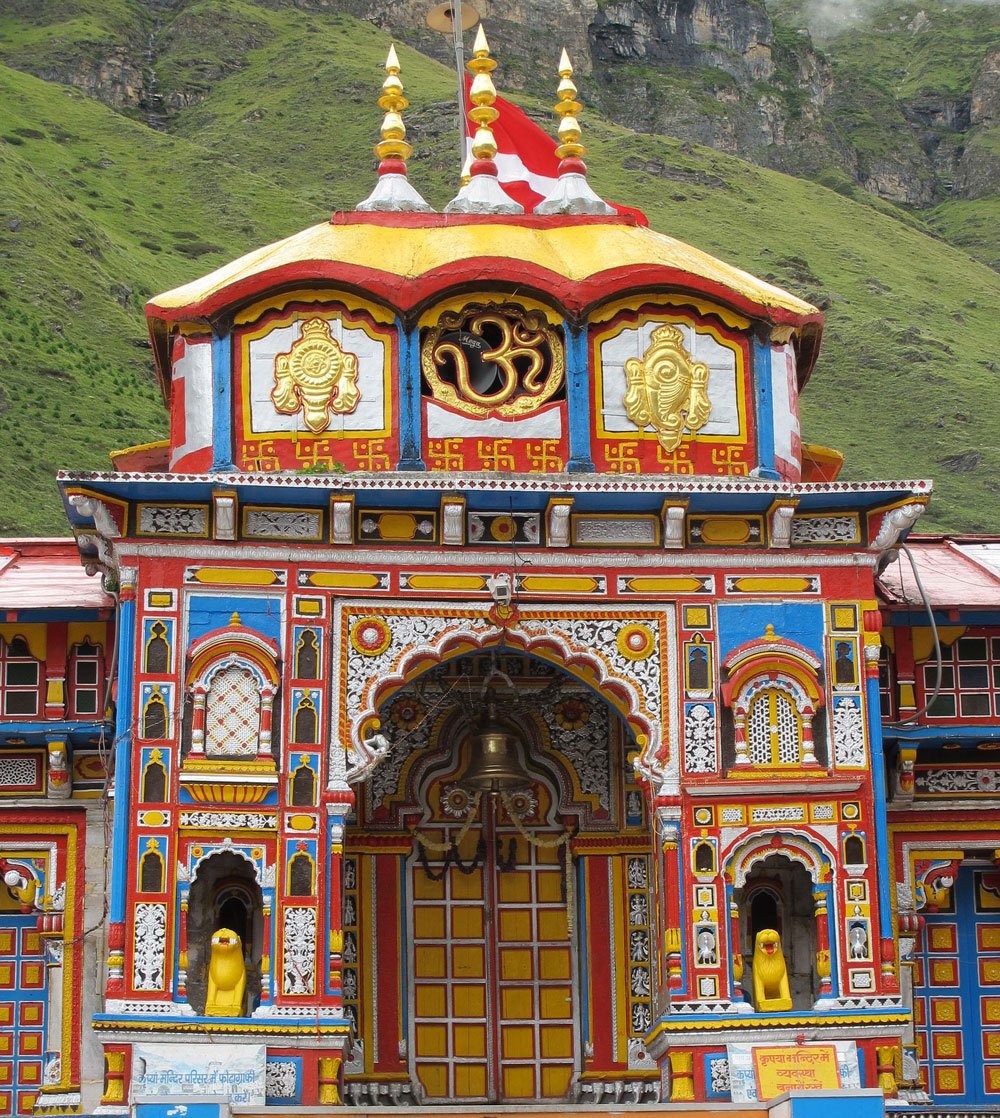BADRINATH
The Badrinath Temple also known as the Badrinarayan Temple, located in Uttarakhand's Badrinath town, is one of the four Char Dham (four important pilgrimages) in the state. There are four pilgrim destinations namely Yamunotri, Gangotri, Kedarnath, and Badrinath collectively known as Char Dham. These pilgrim centers draw a large no. of pilgrims each year, thus becoming the most important hubs of religious travel in the whole of Northern India.
Badrinath is located at an elevation of around 3,100 m. Located in the Garhwal Himalayas, on the banks of the Alaknanda river, this sacred town lies between the Nar and Narayana mountain ranges. The temple is believed to have been established by sage Adi Shankaracharya in the 8th century. With Lord Vishnu as its presiding deity, the temple remains open for six months a year. In winter it becomes inaccessible due to heavy snowfall. Badrinath is also a Hindu holy town and a Nagar panchayat in Chamoli district in the state of Uttarakhand, India. It's just Approx. 90 kilometers from Chamoli Gopeshwar town, the district headquarter. It is one of the four sites in India's Char Dham pilgrimage and is also part of India's Chota Char Dham pilgrimage circuit. It gets its name from the Badrinath Temple.
The temple has been repeatedly destroyed by earthquakes and avalanches. As late as the First World War the town consisted only of the 20-odd huts used by the temple's staff, but the site drew thousands each year and up to 50,000 duodecimal festivals (every twelve years). In recent years its popularity has increased still more, with an estimated 600,000 pilgrims visiting during the 2006 season, compared to 90,676 in 1961. The temple in Badrinath is also a sacred pilgrimage site for Vaishnavities. Badrinath is also the gateway to several mountaineering expeditions headed to mountains like Nilkantha.
The Badrinath Temple is the main attraction in the town. According to legend, Shankar discovered a black stone image of Lord Badrinarayan made of Shaligram stone in the Alaknanda river. He originally enshrined it in a cave near the Tapt Kund (hot springs). In the sixteenth century, the King of Garhwal moved the murti to the present temple. The temple is approximately 50 ft (15 m) tall with a small cupola on top, covered with a gold gilt roof. The facade is built of stone, with arched windows. A broad stairway leads up to a tall arched gateway, which is the main entrance. The architecture resembles a Buddhist vihara (temple), with the brightly painted facade also more typical of Buddhist temples. Just inside is the mandapa, a large pillared hall that leads to the garbha graham, or main shrine area. The walls and pillars of the mandapa are covered with intricate carvings.
Devansh Binjola
IX - C
D.A.V. Centenary Public School, Jagjeetpur, Kankhal, Haridwar




Comments
Post a Comment